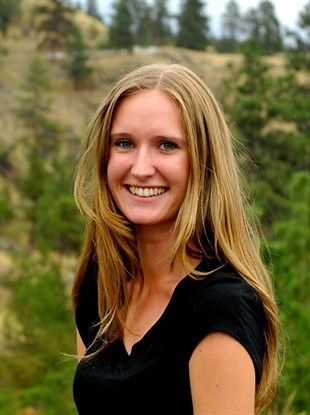
Charlotte Helston is the Vernon reporter for InfoNews.
(ADAM PROSKIW / iNFOnews.ca)
Republished July 16, 2016 - 8:14 AM
Original Publication Date July 15, 2016 - 10:36 AM
OPINION
Sometimes, it’s helpful to go back to the very beginning of a story. For this one, we have to go back about 130 years. It’s a long time, and it will take me a while to get through it all, but I hope you’ll bear with me.
To the best of my knowledge, it goes like this:
In 1866, a white settler named Alexander Fortune claimed 160 acres of land in the area now known as Enderby, a small city in the North Okanagan. In 1877, the Joint Reserve Commission (established by the B.C. and Canadian governments of the day to ‘fix’ boundaries of First Nations reserves) visited the region to ‘explain their intentions as to the assignment of land’ according to commission’s own report on its Aug. 23, 1877 stopover.
“… The Chief.. told us he wanted for his people the cultivated farms appertaining to Mr. Fortune…. We told him that was out of the question, the land having many years ago been sold to the Whites,” the report states.
The commissioners were told, however, about a burial site within Fortune’s field and made arrangements to have roughly three quarters of an acre staked off and enclosed. In the McKenna-McBride Royal Commission of 1913-1916, Fortune himself describes his understanding of the graveyard:
“… in 1867, there were somewhere about 22 Indians composed of men, women and children and they told me that this place was their home. They told me that some year previous, I expect it would be 1862, that there were quite a large number of Indians here and small-pox had killed the most of them. I could quite understand that because I had travelled through the country and found that the Indians had suffered very much with the small-pox in that year, and some of the Indian women showed me some of the bones of the Indians which had just been put under the surface of the ground.”
In a document dated Sept. 3, 1877, the commission allotted the burial ground in Fortune’s field to the Spallumcheen Band. The site became referenced as the Graveyard Reserve, and is acknowledged in several documents leading up to the early 1900s. An aerial photograph from 1928 shows an uncultivated area about .82 acres in size, presumably the graveyard, still marked off and left undisturbed.
But something changed about two years later. According to a 1997 notice of claim prepared by the band’s lawyer, a problem arose in 1930 when the transfer of reserves from the Province of British Columbia to the Federal Crown took place.
“For some unknown reason, the Fortune Field lands were not included in those being transferred,” a letter from the B.G. Bergh Law Corporation to the Specific Claims of B.C. Office states. “In the Schedule of Indian Reserves for 1943, this reserve is listed as ‘cancelled.’”
Whether a simple mistake, an oversight or something more devious, it’s an error the band has been trying to rectify ever since.
As mentioned, the band first launched a claim to the land in 1997 through the specific claims process. In 2008, the Specific Claims Branch finally accepted the Graveyard Claim for negotiation. Just to recap, that’s 78 years after the Graveyard Reserve was, for whatever reason, removed from the reserve.
During that time, the farm changed hands and the once marked off cemetery was ploughed under with the rest of the field. It is now unknown where exactly the graveyard rests.
In 2009, a settlement offer was made by the government and turned down by band membership in a referendum.
That brings us more or less to today. The settlement offer is back on the table for $300,000. A referendum asking band membership if they support accepting the money is set for tomorrow, July 16 — unless elders and community members are successful in having the vote called off.
What a horrible position the Splatsin have been put in. Not only are they dealing with the historic injustice of their land, and cultural sites being stripped away, they are now grappling with a divide in the community between the band council, which called for the referendum, and the elders, who want it cancelled.
There are 94 calls to action in the Truth and Reconciliation Commission’s 2015 report. When that report was released, it was clear not everything would, or even could, change overnight. But, it was a starting point.
Now, with the Graveyard Reserve, there is an opportunity to put at least some of those calls to action into practice — a chance to lift them from the pages of that report and bring them into the community.
How the fate of the grave site is handled could mark a positive step towards truth and reconciliation in our country, but only if it is done with respect, an understanding of the history involved, and full consultation with the Splatsin people.
— Charlotte Helston is the Vernon reporter for iNFOnews.ca.
News from © iNFOnews, 2016